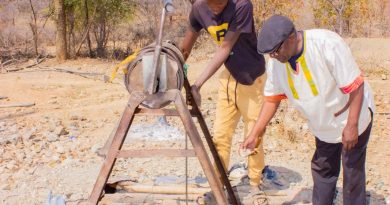Breaking the silence: Addressing sexual violence against boys in Zim
SEXUAL violence against boys is an urgent and growing concern globally and in Zimbabwe, as recent media reports have revealed a troubling increase in cases. This issue highlights the vulnerability of boys, which has been largely marginalised, leading to underreporting and negative outcomes.
The crisis also raises deeper questions about the safety of institutions such as schools that have a mandate to ensure safeguarding and protection of children.
A hidden crisis
Sexual abuse of boys is a hidden crisis.
In general, issues of sexual abuse are not spoken about enough in Zimbabwean society, much less is spoken of regarding sexual abuse perpetrated on boys.
The silence culture is enabling abuse to go on undetected and unchecked.
In many homes and schools, children are still being raised under a culture of silence and fear, where speaking up is considered disrespectful and sex is a taboo subject of discussion. This silence is not protection.
It is complicity. When children lack the language, confidence, and safe spaces to speak about and report abuse, perpetrators thrive.
Boys who experience sexual violence often face societal norms and cultural stigmas that discourage them from seeking help.
This failure to acknowledge the vulnerability of the boy child and their invisibility is compounded by a lack of awareness and understanding, leaving many cases unreported and unresolved.
Research shows that boys who experience sexual abuse are less likely to ask for help and more likely to face challenges in future relationships, underscoring the long-term impact of this issue.
Recent data on sexual violence in Zimbabwe highlights the gravity of the issue.
For instance, in the third quarter of 2023, there were 2 736 cases of sexual violence reported, equating to a crime rate of 18 per 100 000 people.
While this statistic encompasses all genders, it underscores the broader crisis of sexual violence in the country.
Unfortunately, specific statistics focusing solely on boys remain scarce, reflecting the persistent underreporting and marginalisation of male survivors.
This lack of detailed data further emphasises the need for targeted research and advocacy to address the unique vulnerabilities boys face.
Institutional failures
The safety of schools and other institutions has come under scrutiny, with recent reports implicating trusted figures such as educators and caregivers in abuse cases.
These betrayals of trust highlight the need for stronger measures to ensure the protection of all children, particularly boys, within these environments. The shocking revelations that over 30 pupils were allegedly sodomised by a school’s deputy headmaster must send chills down every parent’s spine.
This is a moment of reckoning for Zimbabwe.
It is a painful reminder that schools, which should be sanctuaries of learning, growth and safety, can become spaces of trauma when systems meant to nurture and protect children are weak or ignored.
The fact that a deputy headmaster could allegedly carry out such acts repeatedly, without detection or intervention, is not just a personal failure — it is a system failure.
While this case is shocking in its scale, it is sadly not an isolated incident.
It is a brutal reflection of the deep-rooted weaknesses in our child protection systems within the education sector and shows that our systems for safeguarding children are dangerously inadequate.
For far too long, cases of abuse have been swept under the carpet, with victims silenced by shame, fear and a lack of trust in systems that should protect them.
These recent cases are shocking and alarming, but must be used as a wakeup call to re-evaluate the safety of schools nationwide.
We must rethink the entire system. Children spend more of their waking hours at school than they do at home.
Schools are, in essence, where children live, learn and grow.
This makes it all the more urgent that we treat schools not just as places of academic instruction, but as primary caregiving environments—spaces where every child must be safe, heard, and protected.
This moment calls for urgent introspection and action.
From the training of teachers to the recruitment processes, from raising children’s awareness to strengthening accountability structures—every level of our school system needs an overhaul.
We must ask ourselves:
Are teachers adequately trained in safeguarding, ethics, and child protection?
Such training should be embedded into every teachers training institution and annual mandatory certified child safeguarding refresher trainings for all teaching and ancillary staff.
The training should include child abuse indicators, safe touch policies, handling disclosures, and referral procedures.
Are we vetting school staff thoroughly before they are given access to children?
Strengthen recruitment and vetting protocols by implementing mandatory background checks and psychometric assessments for school personnel to assess their suitability to access to children.
Are our schools equipped with functional, enforced child safeguarding systems and policies?
Robust child safeguarding systems need to put into place for every school with regular audits and external oversight to ensure compliance and accountability.
Regular, unannounced school inspections must include a review of safeguarding systems and interviews with students while engaging civil society in independent monitoring of school environments.
Schools should develop and publicly display their safeguarding policies with clear reporting pathways. NewsDay




